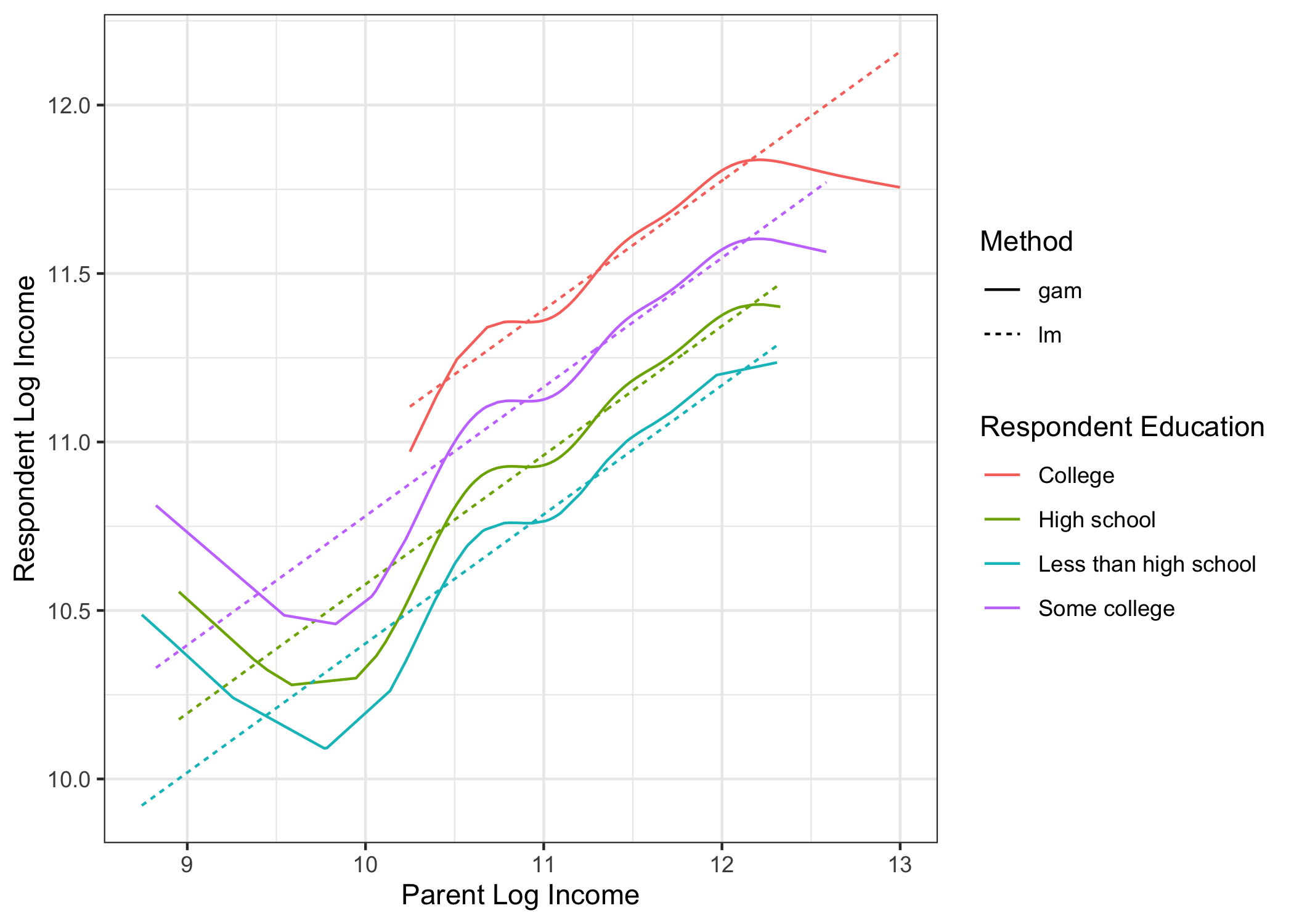Machine learning: Nonlinear smooths with mgcv
Standard linear models assume that the response is a linear, additive function of predictors. Splines relax the first part of that assumption: perhaps we want to assume that children’s incomes are a nonlinear function of their parents’ and grandparents’ incomes.
The mgcv package supports this type of estimation. Start by preparing the environment.
library(tidyverse)
library(mgcv)
learning <- read_csv("learning.csv")
holdout_public <- read_csv("holdout_public.csv")
Now, fit a gam() object with the mgcv package. This example asks R to predict respondent income (g3_log_income) as a smooth but potentially nonlinear function of parent income (g2_log_income) plus a function of respondent education (g3_educ).
fit <- gam(g3_log_income ~ s(g2_log_income) + g3_educ,
data = learning)
Predict in the holdout set exactly as you would with OLS.
fitted <- holdout_public %>%
mutate(g3_log_income = predict(fit, newdata = holdout_public))
In this case, the nonlinearity we detect might be mostly noise; it is possible that OLS is in fact the better algorithm!

To learn more, I would recommend
- typing
library(mgcv)and then?gamin your R console - Wood, Simon. 2006. Generalized Additive Models: An Introduction with R.
- Wood’s website of supporting materials